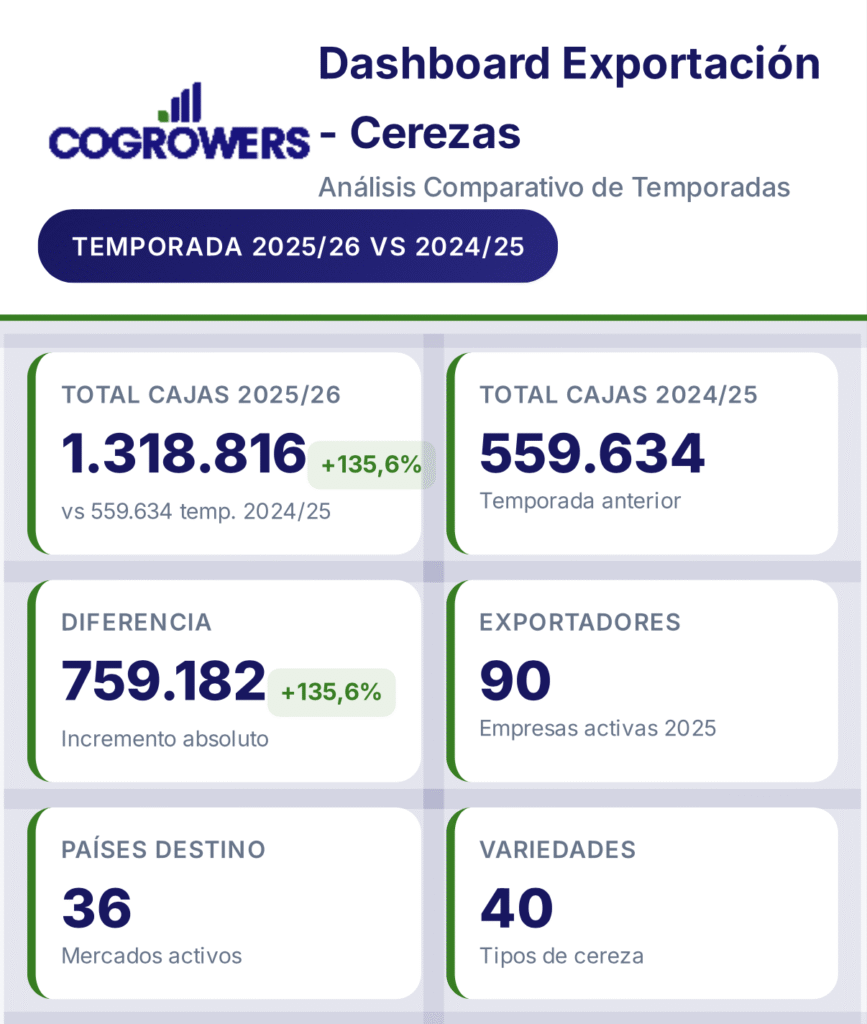
Mites
- It belongs to the taxonomic subclass ACARI (formerly Order Acarina); a subcategory of Arachnids. Its body is divided into 2 sections in adulthood (prosoma and opisthosoma), it has 8 legs (exceptionally 4 or 6) and a chitin exoskeleton.
- Adult (typical) mites possess: sucking mouthparts (styliform chelicerae), complex abdomen (idiosoma), and 7-segmented legs with sophisticated tarsi (claw complex).
- Mites of agricultural importance measure from 0.1 mm to 1.0 mm and are evidently phytophagous, except for a known family of predators. Some 50 thousand species of mites have been classified and of these, no more than 10 species are frequently present in Chilean agriculture (González, 1961, 1981, 1987).
Mites in Cherry Trees.
Generalities:
The presence of various mites in cherry crops has been increasing over the last two seasons due to various conditions. Among these, the rise in temperatures stands out, which has undoubtedly become a major problem in the post-harvest stage of the crop.
Damage:
The main damage caused by spider mite attacks (regardless of the species) is caused by feeding, where the cellular tissue of infected leaves breaks down, emptying the cellular content, which ends up exposing the damaged area to radiation, increasing transpiration which results in accelerated dehydration. The damage is cumulative, irreversible tanning begins to be seen on the leaves (fig. 1), photosynthesis decreases, and in some cases, severe attacks can accelerate the process of leaf fall (fig. 2).

Figure 1

Figure 2
Species of importance for cultivation.
Tetranichus urticae
The two-spotted spider, one of its common names, is usually found in dry environments, generally living grouped in colonies on the underside of leaves. Nymphs and adults produce silk in abundance, as a way of protecting themselves from exposure to predators and chemical controls. Their development stages are; egg, larva, protonymph, deutonymph and adult (Fig. 3). Within the last monitoring, the same species has been identified, in different colors; orange to reddish, light yellow or light green to dark green (Fig. 4).
Its cycle can be completed in less than 9 days under optimal development conditions (high temperature and low humidity). As seen in Figures 4 and 5, in conditions of food shortage or when the plant is heavily infested, the tip of the leaf or shoot can populate different structures of the tree, grouping all the individuals and then by air currents, or by gravity they are transported to another plant.

Figure 3

Figure 4

Figure 5
Images of Tetranichus urticae in cherry trees.

Species of importance for cultivation.
Panonichus ulmi
The red spider is usually easily recognized by its distinctive deep red color, its spherical shape and its elongated hairs that can be identified when observed with a magnifying glass (Fig. 6 and 7). It is a polyphagous pest, it is present in many fruit trees such as; Cherry trees, apple trees, plum trees, vines, among others. Unlike Tetranichus, This species does not produce weeds, so its control may be a little easier than those that do (due to direct contact with the spray).
Its cycle can be completed in less than two weeks, González (1981, 1984) indicates that for the central zone of Chile P. Ulmi can develop up to 7 generations per year with optimal development conditions (high temperature and low humidity).
Unlike the previous species, P. ulmi, it spends the winter in the form of an egg in the structure of the tree, beginning to appear from March to May (the only present state of this species). González (1981; 1984; 1987). (Fig. 8)
 Fig.6
Fig.6 Fig.7
Fig.7 
Fig.8








